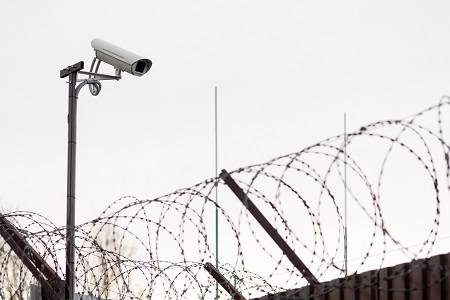Video surveillance is a staple in any external and internal security solution, so how can you ensure external cameras are still efficient in bad weather?
Video surveillance systems are a critical component to perimeter security solutions. Video surveillance can be used in a number of environments and industries to help prevent theft, ensure the protection of employees, the public and goods, as well as aiding in tackling crime.
Video Surveillance serves the purpose of observing a specific area or areas around or within a building, warehouse, school and many other locations. These systems help to deter crime, incidents and also protect your facility. In the world of ever-changing and advancing technology, Video Surveillance can do more than ever before. Whether the goal for your facility is the prevention of theft, burglary, accidents, violence, or tracking employees and visitors, Video Surveillance is a key factor for implementing the highest level of security for your facility.
There are several benefits of incorporating a Video Surveillance system into your facility. The security of your employees, customers and business are extremely important, with Video Surveillance you have the ability to monitor your facility either at your location or from a remote location. With advancing technology, we have the ability to store footage digitally, which makes it easier to find your previous footage either through a hard drive, server, DVR (digital video recorder), or other methods. The following are two examples of how imperative stored footage is for your facility: it could provide evidence in case an investigation occurs, or if there is an incident of an intruder. These systems can not only keep your employees and customers safe, but they also have the ability to help keep them honest.
The ability to provide a safe and secure environment is high priority for all businesses. Whether you are a retail company who would like to prevent theft from customers and employees, a warehouse looking to reduce accidents, a healthcare facility looking to protect your patients and staff, or a school looking to safeguard your students and staff.
In terms of external video surveillance, in connection to other security solutions such as access control or perimeter protection, cctv cameras play an integral role in protecting a building or premises. So, what are the top tips for making sure your cctv cameras are waterproof, weatherproof and accurate during difficult hazardous weather.
Security cameras in winter
Cold weather can wreak havoc on your video surveillance system, but making sure that your cameras can survive the winter is sometimes an afterthought that occurs only when below-freezing temperatures have hampered their performance. Here is Dahua’s checklist to keep your security solution up and running during the coldest months of the year.
Select a high IP rating: Cameras in cold climates need a weather-rated enclosure of at least IP66 to withstand harsh weather like snow and sleet. In addition, these enclosures should be checked regularly to make sure the seals are still tight. Humidity can cause condensation to accumulate inside the camera and turn to frost. Because of this, you should also take caution when moving a device from extreme cold to a fairly warm environment. If condensation is bad enough, it could short circuit internal components.
Read the full article in our February issue here: February 2022 Single Issue – (securitybuyer.com)
Media contact
Rebecca Morpeth Spayne,
Editor, Security Portfolio
Tel: +44 (0) 1622 823 922
Email: editor@securitybuyer.com













